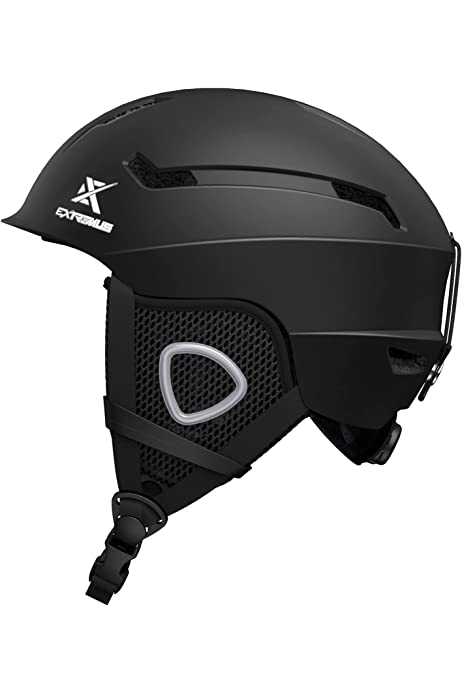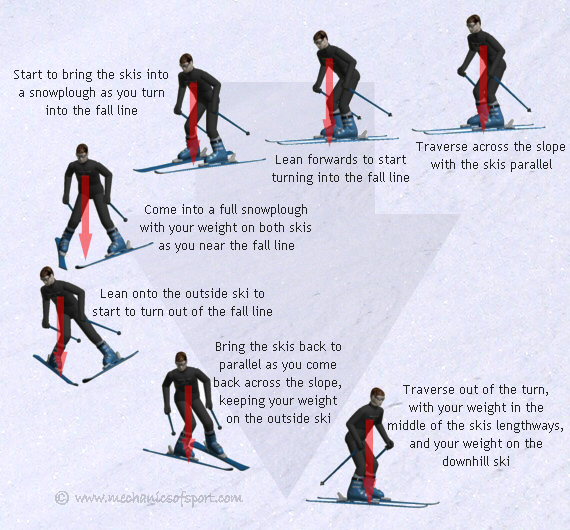
It's a thrilling and enjoyable sport. It has many advantages over traditional Alpine Skiing, including the adrenaline rush of climbing up natural terrain, no rules, and the freedom to ride or ski as you wish.
Freeriding originated as a reaction to the strict competition system that was prevalent in the early days. In recent years, freeriding has seen a significant increase in popularity as more people are looking to enjoy the freedom of riding off-piste while putting their own stamp onto a mountain.
These events judge athletes on their ability achieve high speeds and daredevil moves in a manner that is similar to the scoring system for gymnastics. They should also exhibit great fluidity and creativity when skiing.
Freeride World Tour, which was started in 1998, is a showcase for athletes and a chance to show their unique skills. Since then, it has grown into an internationally recognized event and a great platform for exposure and adulation for skiers.

Freeride competitions such as the Winter X Games or the Freeskiing World Qualifier are extremely popular. These events mix alpine and backcountry ski.
These events were held in isolated areas without lifts and were traditionally reserved for skiers who can navigate up and down mountains safely on their own. This competition uses a variety of equipment in order to get the most out of their experience.
Snow conditions and snow stability are extremely variable, and must be assessed carefully before venturing onto the slopes. In a typical freeride competition, competitors are allowed to inspect the course ahead of time using satellite maps and binoculars so they can plan their route accordingly.
To avoid injury, skiers must have the ability to maneuver in tight spaces and negotiate steep and uneven terrain. Skiers must be able ski in avalanche terrain and have the gear necessary to deal with any situation.
One example is that skiers may wear beacons to transmit their location in an avalanche. Others might have a shovel to help dig out a friend in an avalanche. Or a probe to determine where the avalanche buried them.

These are just a few of the different types of gear that can be used in freeride skiing. While gear can be different depending on terrain type, the general design is very similar.
Freeride skis tend to be lighter, more narrow and have a lower profile that slalom and race skis. This makes them a lot more versatile for skiing off-piste and on deep powder snow.
There are several styles of freeride snowskis that you can choose from. They also vary in price depending on how big or small they are. These are the most commonly used skis today and can all be purchased at ski shops around the world.
FAQ
How can you travel light?
There are no right or wrong answers when packing for a vacation. Here are some tips to help you decide what to pack.
-
Only take what you actually need.
-
Only bring what you plan to actually wear.
-
Don't overload yourself with too many items.
-
Make sure you have room in your suitcase.
-
Always make sure you have everything you need.
-
Enjoy free storage
-
Instead of purchasing bottled water, use reusable water bottles.
-
A backpack is better than a luggage.
-
When possible, walk or cycle instead of taking public transport.
-
Select the right bag size
-
Be careful not to carry large items.
-
You should be prepared for every eventuality
-
Do not leave anything behind
What should you never forget when traveling?
When you travel, you'll find yourself in situations with little time to make decisions. You should be ready to improvise.
Sometimes you might find yourself stuck for days, weeks or months. If you've planned ahead, you'll have food, water, shelter, and a place to sleep. But, if not, you might have the need to improvise.
In these instances, you may need to rely only on what you are good at. It means you have to be able to quickly make decisions based upon your experience and instinct.
Sometimes you just can't make a choice. You might find yourself in an area without cell service, out of gas or robbed. In these cases, you will have to adapt quickly and respond to any situation.
You must remain calm, be focused and take decisive action. Don't panic. Instead, focus on what you can control.
If you are lost in the woods, it is possible to choose which direction you should go. For those who are hungry, berries and mushrooms can be eaten. You can drink rainwater, or melt snow if your thirst is great.
Or if you're tired, you can rest. Wrap up warmly if it's cold. If you're wet, you can change clothes. You'll feel happier if you remain positive, no matter what your decision.
What should you bring on vacation?
It is important to plan what you will do during your vacation. It's not just about packing clothes. Also, think about where and how long your stay there.
Think about the activities that you are interested in. Scuba diving is a great option if you're going to exotic destinations. You may also be interested in participating in local festivals and events, especially if your stay is longer.
Tell your loved ones if there are any health concerns so they can plan for you.
What can I pack in my suitcase?
Always have at least two pairs. You need one pair for walking in the city; another pair to go on vacation.
You should also make sure you have enough clothes for both situations. For plane travel, make sure to bring extra socks, underwear, shirt, and pants.
It's a good idea to bring along some clothes for longer stays. This will ensure that you don't feel awkward while shopping for new outfits.
Comfortable shoes are essential for those who take the bus or train. And if you're driving, you'll need to ensure you've got a spare set of tires.
Also, remember to bring plenty of toiletries, such as shampoo, toothpaste, moisturizer, deodorant and toothpaste.
You'll also need a flashlight and an insect repellent.
Do not forget to pack all your essentials in one bag. You'll save both time and space.
Last but not least, make sure to bring a small towel & washcloth. They will be very useful after a long day of sightseeing.
What should I do if I want to buy travel insurance
If you plan to do something adventurous, travel insurance is crucial. You should ensure that you have coverage for all types and forms of adventure sports.
Skiers, for instance, should have adequate medical coverage. It is also worth looking into coverage for theft, loss and damage.
Cover for cancellation should be considered. This means that you can cancel your holiday without paying any penalties.
In addition, you should ask for cover for emergency evacuation. You can also be taken off the mountain in the event of an avalanche, or another natural disaster.
Statistics
- Pack sweaters, jackets, and underwear in reusable compression bags creating up to 75% more space in your luggage. (wikihow.com)
- Alcoholic beverages with more than 24% but not more than 70% alcohol are limited in checked bags to 5 liters (1.3 gallons) per passenger and must be in unopened retail packaging. (tsa.gov)
- No Checked Bags: No Alcoholic beverages with more than 70% alcohol (over 140 proof), including grain alcohol and 151 proof rum. (tsa.gov)
- Between the ages of 11 and 13, kids, or tweens, will likely want some autonomy but also need boundaries. (travelandleisure.com)
- You can use compression sacs or cubes to reduce the volume of your clothes by up to 80%—this is especially convenient for bulky items such as sweaters and jackets. (eaglecreek.com)
External Links
How To
How to plan your next getaway
Planning a trip can involve many things including booking flights, hotel reservations, car rentals, and activities. You must also consider your budget, destination, weather forecast, and other important factors.
These points are essential to keep in mind when you plan your next vacation.
To ensure you get everything right, we have created a step-by-step guide to help you plan your next vacation. This guide was compiled based upon customer feedback and experience. We hope that you will find the following guide useful in planning your next vacation.
Steps:
-
Plan your Budget - Planning your budget is one of the most important steps in preparing for a trip. Before you can start planning where and what you will do, you must first know how much you are willing to spend. If you don’t have sufficient money, you may have to cancel your travel plans.
-
Book Your Flights - After determining your budget, the first thing you should do is book your tickets. Be sure to get the lowest price flight deal. Make sure to check for special offers during peak seasons. These deals could save you a lot of money.
-
You can choose your destination - Once you have purchased your ticket, you need to decide where you would like to go. Numerous factors go into choosing your destination.
-
Locate Accommodations – After you've chosen your destination, you need to locate accommodations. There are many choices for accommodation. You can choose from affordable hostels or luxury suites. Your needs and preferences will determine the type of accommodation that you choose. A hotel is not the best choice if you want to be close to the city centre. If you prefer quiet, peaceful places, a homestay may be the best option.
-
Select Activities & Attractions: Now that you have selected your accommodation, it is time to decide which activities and attractions to include in the itinerary. You have the option to choose a handful of activities or add more depending on the length and duration of your stay.
-
Determine your schedule - After you've chosen the attractions and activities that you would like to include in your itinerary, it's now time to create it. Sticking to a plan will help you maximize the value of your trip. If you have the freedom to roam as you please, your trip will be even more enjoyable.
-
Make an itinerary - This is where you include all details about your trip. It is important to write down everything you need, from accommodation to meals, to activities to restaurants, and to create a list.
-
Research Online – Before you go on your trip, make sure to research online. Find out what other travelers have to say about different destinations by reading reviews and testimonials. This will enable you to plan accordingly.
-
Don't Overpack - This is one of the most common mistakes people make when packing. Avoid bringing more than three sets of clothes. Make sure you bring clothes that are appropriate for the area.
-
Make sure you are prepared - Make sure you have everything prepared before you go. It's not a good idea to spend time looking for documents while you are still on the move.